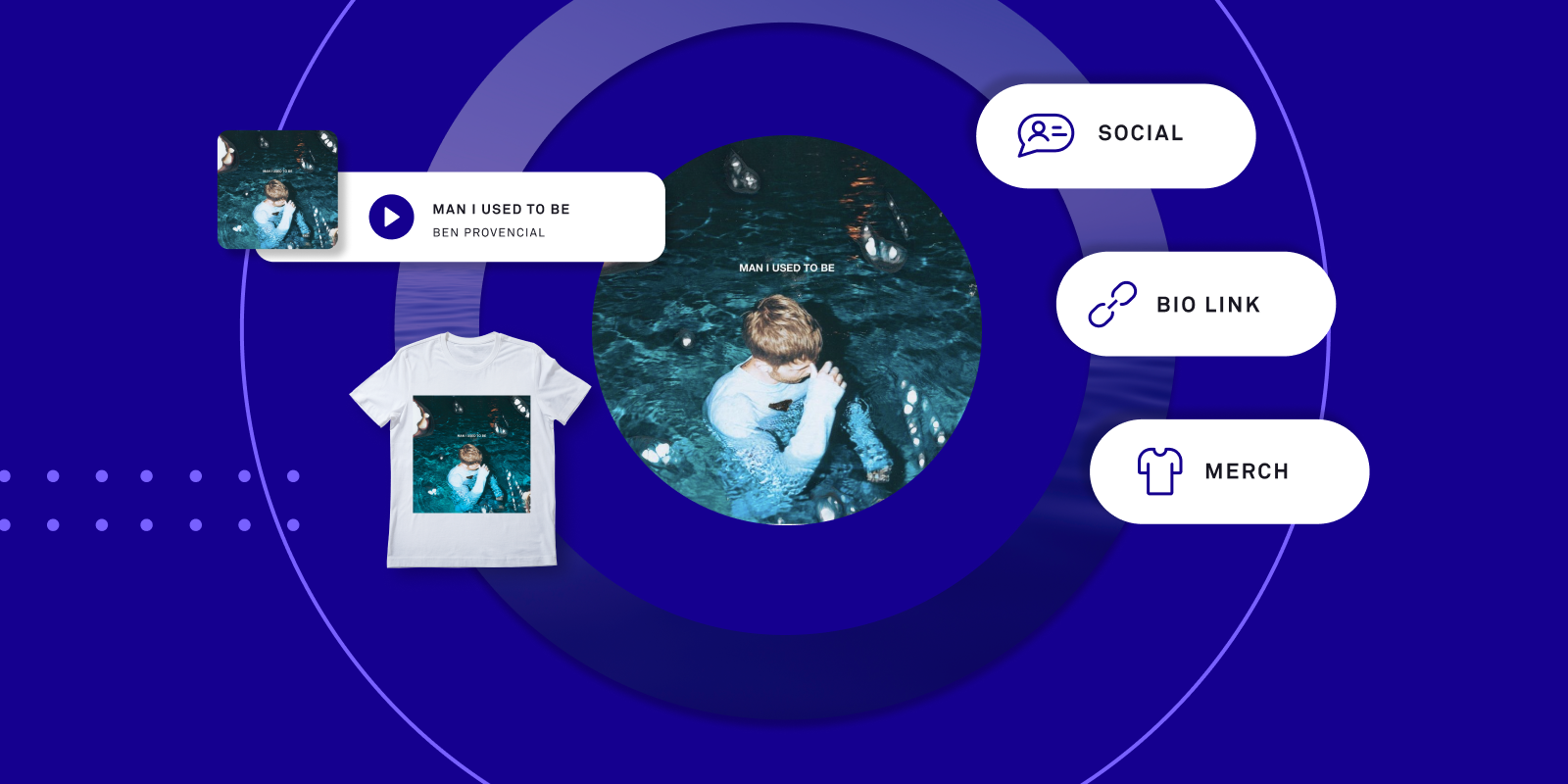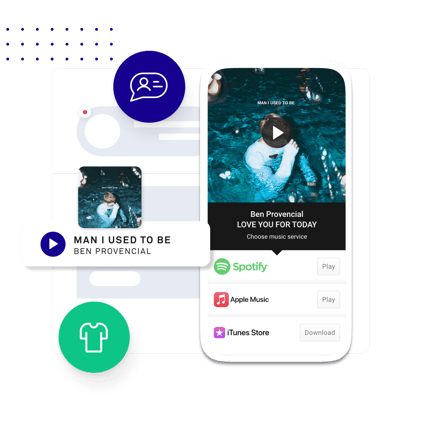Are you making any of these music branding mistakes? Here's what to look out for as an independent artist—and what you can do about it.

You likely remembered part of a song. But what did you visually recall? Maybe you pictured an album cover, a press photo, a memory from seeing them live, or something they said or did that impacted you. Whether subtle or obvious, this is all the result of effective artist branding.
Your artist brand is the key to how you promote your music. But while every brand is unique to the work it represents, there are common mistakes that could stop you from effectively reaching your target audience. Let’s explore five of the most common music branding mistakes that could be getting in the way of growing your fanbase—and what to do about each of them.
1. You haven’t defined your brand strategy.
We see this mistake most often with smaller independent artists who believe that branding doesn’t apply to them. No matter how many fans you have right now, you need a plan for establishing your artist brand for years to come. You’re looking to build brand trust—that is, you want a relationship with your listeners in which they find your work intriguing enough to keep up-to-date with it, leading to long-term support.
Bynder defines brand strategy as a “long-term plan to achieve a series of long-term goals that ultimately result in the identification and preference of your brand by consumers.” But in order to execute your brand strategy, you have to first define your artist brand.
The core of your artist brand consists of three things: your story, your visual identity, and your values. This is what will guide your presentation and brand strategy going forward.
A great example of a branding strategy built off a strong artist brand is that of Ed Sheeran. His story details humble beginnings, from busker to superstar. His visual identity is approachable, casual, and not too clean. He’s often seen with a plain black T-shirt, messy hair, and visible tattoos, while performing alone with his guitar. Fittingly, his values were best defined by GQ’s George Chesterton as “authenticity, realness, earnestness, sincerity.”
Everything Sheeran’s team has done to market him centers around his average Joe approachability. It guides everything from his wardrobe in photo shoots to his social media presence. For instance, he recently took a year off of social media, which could have been career suicide for other artists. But he was consistent with the brand he had established for himself as an authentic, vulnerable person.
Define your artist brand well, and your strategy will follow.
2. Your best foot isn’t forward on streaming services.
Getting your music on streaming services is easier than ever before. But few artists use the resources that streaming platforms offer to their fullest advantage. This starts with your artist profile on platforms like Spotify and Apple Music.
Once your music is uploaded for streaming, you’ll need to claim your artist profiles and fill them out. Remember the first two parts of your artist brand: your story and your visual identity. Platforms like Spotify offer direct ways to establish these parts of your brand through customizable biographies and artist photos. (As an aside, claiming your artist profile on Spotify will get you "verified," thus adding legitimacy to your image.)
But your streaming optimization shouldn't stop there. Other ways to put your best foot forward on streaming services include making your record available for pre-save, publishing artist playlists to connect with followers over other musical interests, and submitting your songs to playlists. Spotify and Bandcamp allow you to send communications to your followers as well, which is a great way to help establish your brand voice.
In addition to your presentation and activity on these platforms, it’s essential to make your streaming links easily accessible. Linkfire offers one-click smart links that contain pathways to all of your streaming links. We figured there needed to be an easy way for people to listen to your music, regardless of what their streaming service of choice is. By placing your Linkfire smart link in your Instagram bio, email newsletters, and other marketing channels, fans who click through can easily choose their preferred music service.
3. Your aesthetic lacks consistency.
Consistent visuals make it easier for fans to recognize and remember you across various touchpoints. They help build an identity that transcends whatever song someone hears.
So how do you create a coherent aesthetic for your artist brand? Start with a logo, and define what colors and fonts you want to use. Essentially, you’re creating a branding guide for yourself and anyone you work with.
These aspects of your branding—the general color scheme, logo, and visuals you use—should be cut from the same cloth across all marketing communications. That includes email newsletters, social media graphics, press photos, album art, merchandising, and music videos.
It’s natural for your branding to change over time. But within an album cycle or campaign, you'll want to keep everything the same. That’s another benefit of promoting your music with Linkfire—it’s super easy to customize your smart links so that they align perfectly with your music brand.
4. Fans are leaving shows without souvenirs.
Unfortunately, we operate in oversaturated markets. Attracting fans means competing for their attention. One way to stick out is to offer souvenirs to those who see you live.
Souvenirs come in many forms: T-shirts, physical copies of your music (CDs, cassettes, vinyl), and stickers are common concert souvenirs. But you can get creative as well. For example, NYC-based artist Dalton Deschain sells books based on his music (and vice versa) rather than CDs. This makes his brand more memorable, as not many artists sell novels at their merch tables.
Another simple idea is to hand out free stickers or flyers to those without money for merchandise. That way, you can make sure everyone in attendance leaves with something to remember you by. In the digital age, every flyer you hand out should have a QR code to help people listen to your music or follow you.
Getting in front of people is one thing, but staying fresh in their minds is another. If you want fans to keep up with what you're doing, make it hard for them to forget you.
5. You haven’t nailed down your brand voice.
Does your brand voice consistently reflect what you want to convey as an artist? This applies to social media captions, emails, press release quotes—anything that requires copy. If you put in the work to establish your brand voice before you start marketing your music, everything will flow much more easily.
But how do you actually develop your brand voice? The Content Marketing Institute has some great resources for doing so. One helpful thing they recommend is to come up with three words that describe your brand as an actual person. Are you blunt, non-serious, and self-deprecating like Phoebe Bridgers? Or are you sentimental, inventive, and enthusiastic like Lady Gaga?
The key to answering this is establishing how you see yourself as an artist and how you want to communicate with listeners. Once you have this down, you can start communicating with potential fans consistently and often!
Get Linkfire’s curated tips straight to your inbox and become smarter in music marketing. Subscribe to our newsletter.


